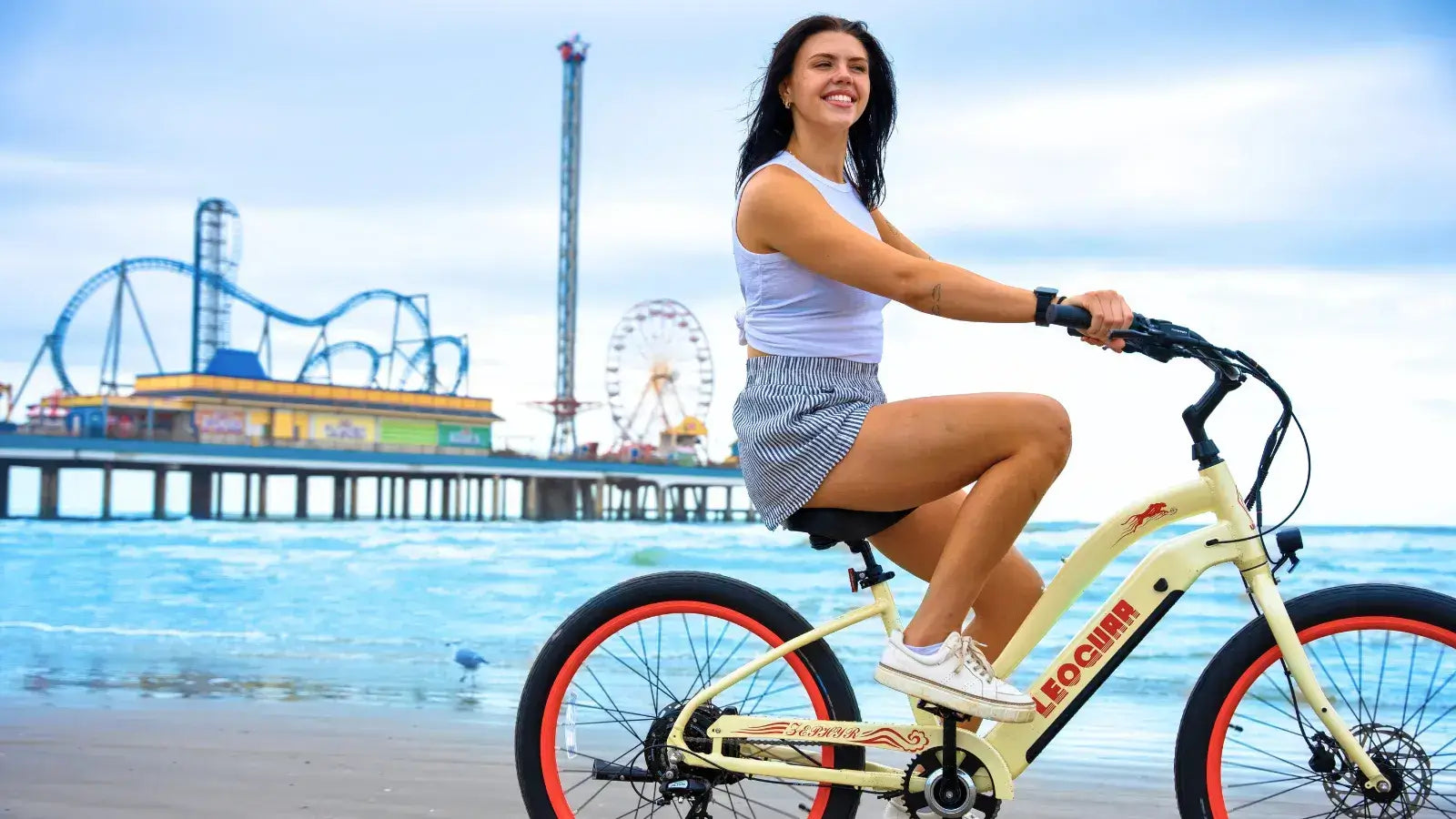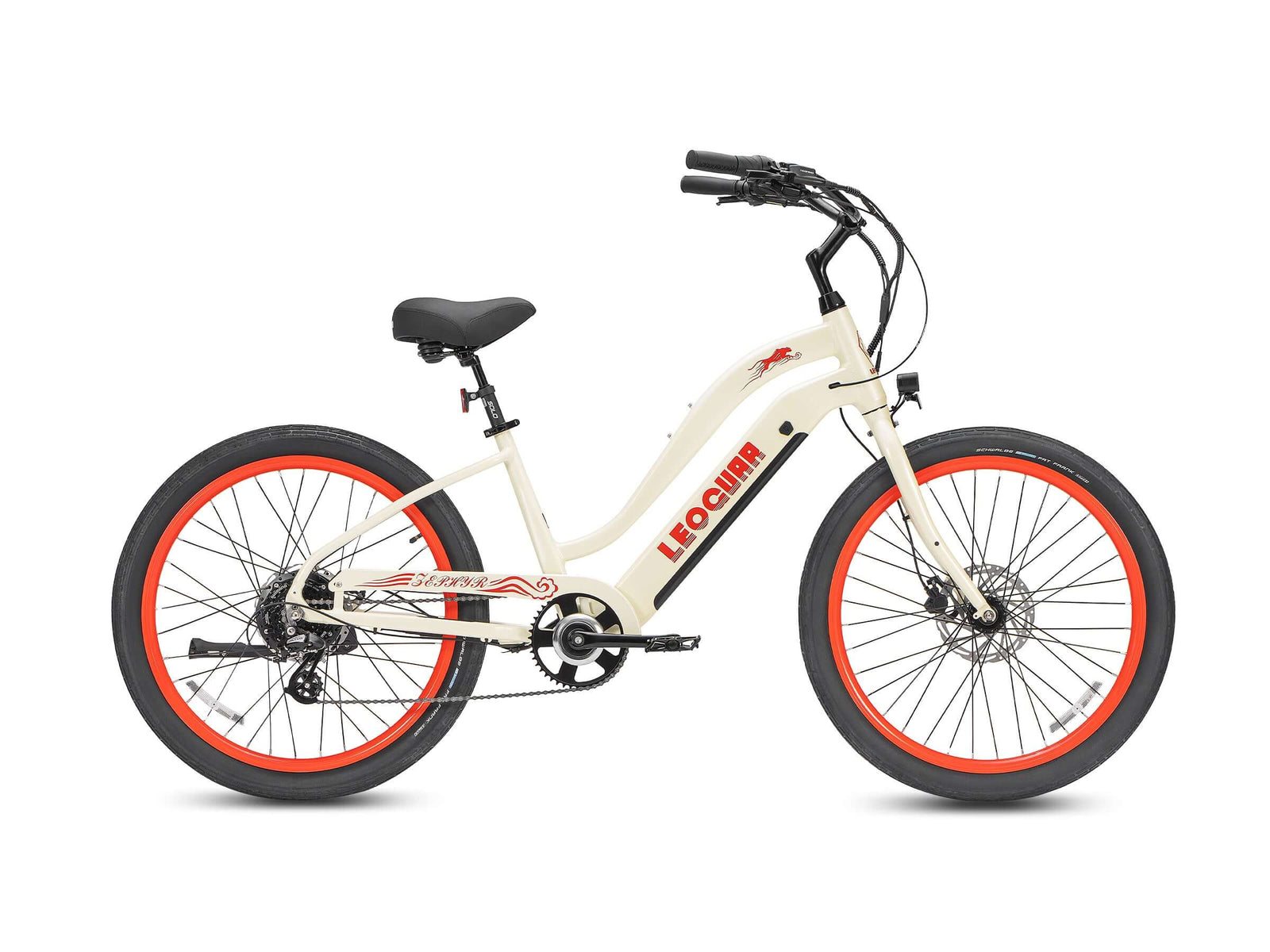
How to Spot a True Fat Tire Beach Cruiser (Not Just a Lookalike)
Comfort vs. Performance
You see them everywhere: bikes with huge, balloon-like tires rolling down the boardwalk or parked by a cafe. But when you start shopping, you notice that not all bikes with big tires look the same. Some seem built for arctic trips, while others give off a relaxed, sunny-day feeling. This confuses many buyers. The market has standard fat bikes, fat tire mountain bikes, and true fat tire beach cruisers. They may share wide tires, but their soul is completely different.
This guide will teach you how to spot the difference. We'll look beyond tire size and show you the key features that define a true fat tire beach cruiser. The secret lies in the frame shape, the parts, and how the bike feels to ride. By the end, you'll know how to find the bike built for pure comfort and cruising. The main difference between a fat tire beach cruiser and a standard fat bike is their design goal. One focuses on comfort and easy rides, while the other targets all-terrain ability and performance.
A true beach cruiser's design is all about a relaxed, upright position. The goal is comfort over speed. It's made for smooth, stable cruising along the beach path, boardwalk, or neighborhood streets. Every part helps create an easy, fun experience where you can sit back and enjoy the view.
A standard fat bike is a performance machine. Its roots come from snow and sand racing, where grip and control on tough surfaces matter most. The design focuses on conquering different, often rough terrain like snow, mud, sand dunes, and technical trails. The rider sits more forward and aggressive to get maximum power and control. These different goals affect every part choice. Here's a simple breakdown:
| Feature | True Fat Tire Beach Cruiser | Standard Fat Bike (Trails/Snow) |
|---|---|---|
| Primary Goal | Comfort and relaxed cruising | All-terrain capability and control |
| Ideal Terrain | Pavement, boardwalks, hard-packed sand | Snow, mud, loose sand, technical trails |
| Riding Posture | Fully upright and relaxed | Forward-leaning, athletic |
| Key Feeling | Stable, leisurely, comfortable | Agile, responsive, powerful |
Understanding this main difference is key. It's the reason behind the specific design features we'll look at next. A bike can't be both a pure comfort cruiser and a high-performance trail machine at the same time.
Five Clear Signs
Now that you understand the basic idea, let's get practical. When you're looking at a bike, either online or in a shop, there are five specific features that work as a checklist. These are the clear signs of a true fat tire beach cruiser.
Relaxed Frame Shape
This is the most important sign. A true fat tire beach cruiser uses its frame shape from the classic beach cruiser design. Look for a long wheelbase, which gives great stability at low speeds. The head tube angle will be very slack, or angled out, which adds to that stable, smooth feel. The overall look is low and flowing, with graceful, sweeping tubes. Words like relaxed, sweeping, and stable should come to mind. This is very different from the aggressive, compact, and often angular shape of a fat tire mountain bike.
Upright Riding Position
Pay close attention to the handlebars and where they put your hands. A fat tire beach cruiser will have wide, swept-back handlebars, often called cruiser bars or moon bars. These bars reach back toward you, the rider. This design lets you sit fully upright, with your shoulders back and your arms comfortably bent. There should be very little strain on your back, neck, and wrists. The feeling should be clear. Your position should feel like you're sitting in a comfortable chair, not leaning forward over controls.
The Cruiser Seat
The seat on a fat tire beach cruiser is built for one thing: maximum comfort. Forget about lightweight, basic designs. A true cruiser seat is usually oversized, deeply cushioned with foam or gel, and often has a dual-spring system underneath. Its job is to absorb bumps and provide a soft platform for casual rides where you're sitting upright and putting most of your weight on the seat. This is very different from the narrow, firm, and lightweight seats found on performance fat bikes.
Tires for Sand and Pavement
Yes, the tires are fat, but not all fat tires are the same. The tread pattern tells the story. A fat tire beach cruiser is meant for rides on pavement, boardwalks, and hard-packed sand. So it will have tires with a smoother, less aggressive tread pattern. Look for semi-slick designs, inverted treads, or patterns with small, low knobs. This design reduces rolling resistance on hard surfaces, making pedaling easier and quieter.
The tire is still wide enough (usually 4 inches) to provide a large contact patch. This lets you lower the tire pressure for floating when you do ride on soft sand. For riding on soft sand, we recommend low tire pressure, usually in the 8-15 PSI range. This makes the tire's footprint bigger and allows it to float on top of the sand rather than digging in.
A Simple Gear System
Cruisers focus on simplicity and low maintenance. While a fat bike built for varied terrain needs many gears to tackle steep climbs and fast descents, a fat tire beach cruiser does not. Many true cruisers are single-speed. This is the ultimate in simplicity and reliability, perfect for flat coastal areas. Others may have a simple, internally-geared 3-speed hub or a basic 7-speed system. These provide a little help for small hills or headwinds but avoid the complexity of a 10, 11, or 12-speed mountain bike system.
Quality and Durability
Finding the right style is the first step. The second is finding quality, especially for a bike that will live near the coast. The salty, humid air of a beach environment causes rust very quickly. A cheap copy will show signs of rust and decay within a season, while a well-built, beach-ready cruiser is designed to resist it.
This is our expert checklist for spotting a durable fat tire beach cruiser that will last:
-
Frame Material: While classic cruisers were steel, for a beach environment, an aluminum frame is a better choice because it naturally resists rust. If you are considering a steel frame, make sure it has a thick, high-quality powder coat finish with no chips or scratches where rust could start.
-
Components and Hardware: This is a huge sign of quality. Look closely at the small parts: the nuts, bolts, screws, and spokes. On a quality beach cruiser, these will be made of stainless steel or will have a visible protective coating. Cheaper bikes use basic plated steel hardware that will show rust spots after the first encounter with sea spray.
-
Chain: A standard steel chain will rust quickly. A manufacturer that cares about longevity will specify a rust-buster or other coated chain. This is a small detail that makes a big difference in a coastal climate.
-
Brakes: Many modern fat tire cruisers use disc brakes, which offer excellent stopping power in all conditions. However, the classic coaster brake (a back-pedal brake) is a great option for a beach cruiser. Because the mechanism is sealed inside the rear hub, it is almost completely protected from sand, salt, and water.

Your Pre-Purchase Guide
You've done your research and are ready to see some bikes. Whether you're visiting a local shop or meeting a private seller, you can now use this knowledge to make a smart choice. Use the Five Clear Signs as your mental checklist while you look at the bike. Here are the key questions to ask the shop staff or seller before you buy:
-
Can you tell me about the hardware? Are the spokes, nuts, and bolts made of stainless steel? This question immediately shows you are a knowledgeable buyer and gets right to the issue of long-term durability.
-
What is the frame made from? How is it finished to protect it from rust and salt air? This asks about the quality of the bike's main component and its suitability for a coastal environment.
-
Is it possible to take it for a short test ride? This is the most important step. A bike can look perfect on paper, but the feel is everything.
During that test ride, pay attention to the experience. A true fat tire beach cruiser should feel immediately comfortable and stable. It should not feel twitchy, aggressive, or awkward. If you find yourself leaning forward uncomfortably or the steering feels too quick, it's likely a fat bike with cruiser styling, not the genuinely relaxed experience you're looking for. Trust your gut. The right bike will feel like an old friend from the very first pedal stroke.
Frequently Asked Questions
1. What's the difference between fat tire bikes for sale near me and true beach cruisers?
True beach cruisers focus on comfort with upright riding positions, relaxed frame geometry, and simple gear systems. Regular fat bikes prioritize performance and all-terrain capability with more aggressive positioning and complex components.
2. Can I ride a fat tire beach cruiser on regular pavement?
Yes, fat tire beach cruisers are perfect for pavement riding. Their smooth tread patterns and wide tires provide excellent stability and comfort on roads, boardwalks, and bike paths.
3. How do I maintain a fat tire beach cruiser in a coastal environment?
Look for bikes with stainless steel hardware, aluminum frames, and coated chains. Rinse your bike with fresh water after beach rides and store it in a dry place to prevent salt corrosion.
4. What tire pressure should I use for sand riding?
For soft sand, use 8-15 PSI to maximize the tire's footprint and flotation. For pavement and hard surfaces, you can increase pressure to 15-20 PSI for easier pedaling.
5. Are single-speed fat tire beach cruisers better than multi-speed versions?
Single-speed cruisers offer ultimate simplicity and reliability, perfect for flat coastal areas. Multi-speed versions (3-7 speeds) provide help with small hills and headwinds but add complexity. Choose based on your terrain and maintenance preferences.









































Leave a comment